Adventure Club - Solo: Boulder Red Rocks
This adventure started as all the best ones do: seeing something in the distance and saying "I want to go to there". I had just finished the final leg of Geocache GCNR98 and looked to the west and spotted the tall rocks that make up Boulder's own Red Rocks.
"That doesn't look too far."
And it wouldn't have been, had I known how to get there. As it was, I took the long way past the big, nice Mapleton houses. The road narrowed and I had to look sharply for cars on the blind corners. I came to the Centennial Trailhead, checked the map and headed up the hill.
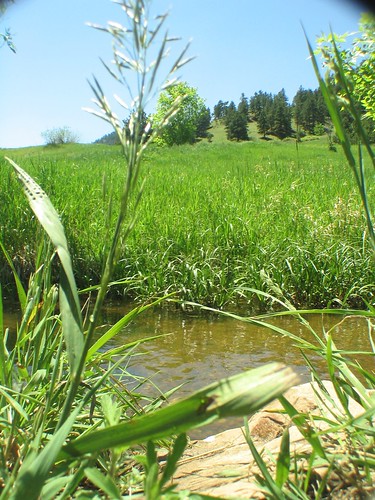
An easy hike. If I had been carrying a sheet birthday cake, I'd have been in good shape. A network of short trails makes up the Red Rocks trail, so Adventurers can tailor the difficulty of the hike to their liking. Ten minutes later I was in front of the huge sheets of sandstone.
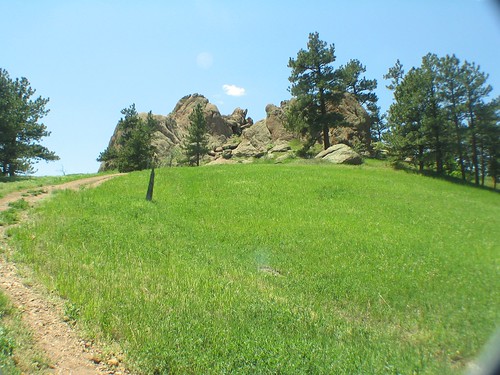
300 million years ago, sediment flowed off a mountain range called the Ancestral Rockies. This formed a bed of sandstone called the Fountain Formation. More recently (only 70 million years ago) the Rockies we now know and love pushed up through the Fountain Formation which is why the striations that indicate sedimentation are now perpendicular to the ground.
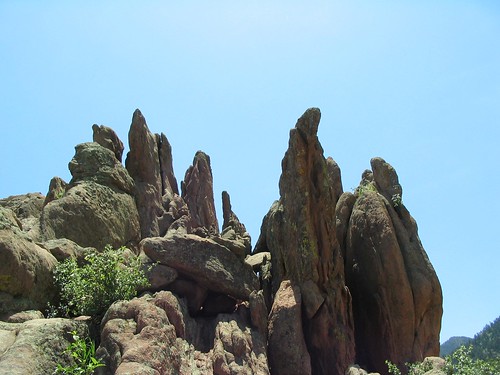
The sandstone invites scrambling, though watch for areas that closed for erosion concerns. Remember the Three-Point Rule and don't forget that your bottom can count as a point. The climbs to the tallest spires will challenge Adventures, but they're not impossible. Even the stroll-up-able stones offer a panoramic views of the city of Boulder.
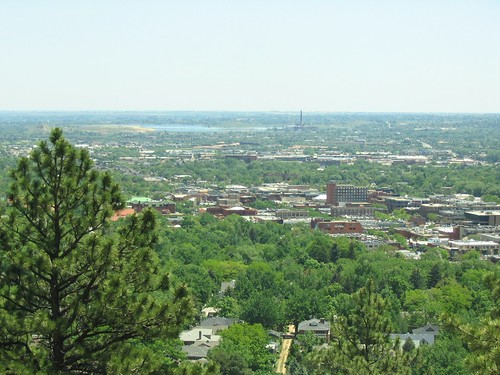
The sign at the trailhead warned that prairie rattlesnakes are most active in the springtime, but confine themselves to abandoned prairie dog towns. Apparently, the prairie rattlesnake is the least aggressive rattlesnake, but I didn't see any. Instead, I saw dozens of adorable lizards! Most likely the Eastern Fence Lizard (Sceloporus undulatus).
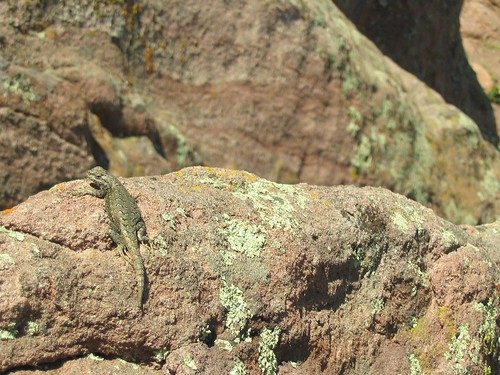
The Eastern Fence Lizard is an example of rapid evolution: it's very susceptible to the toxin of fire ants and National Geographic found that Fence Lizards living in areas with historic fire ant populations had developed longer hind legs to escape the venom of the ants. How rapid are we talking here? Fire ants were only introduced to North America in the 1930s. Go lizards!
Since I hadn't parked at the trailhead, I followed the Red Rocks trail to the Settler's Park trailhead. These paths are a bit steeper than the route from the north, but if I had a travel mug of coffee I wouldn't have spilled a drop.
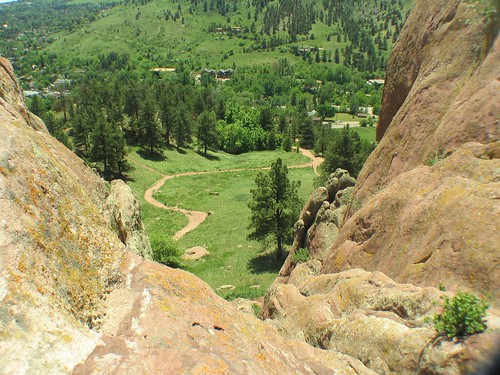
To the west, through the trees, I saw evidence from the April 2008 Settler's Park Fire. Another ten minute hike: a quarter of a mile with a 300 foot change in elevation.
There are no geocaches along the Red Rocks Trail, since it falls under the purview of Open Space and Mountain Parks which prohibits non-virtual geocaches. Dogs are permitted on this adventure, with Voice and Sight Tags. There are primitive-style restrooms at the Centennial trailhead, though not at Settler's Park. For a full adventure, try taking public transportation. The 205 Bus stops at Pearl and 3rd street, just half a block from Settler's Park.
Adventure Rating: Great!
More pictures, as always, on the Flickr.
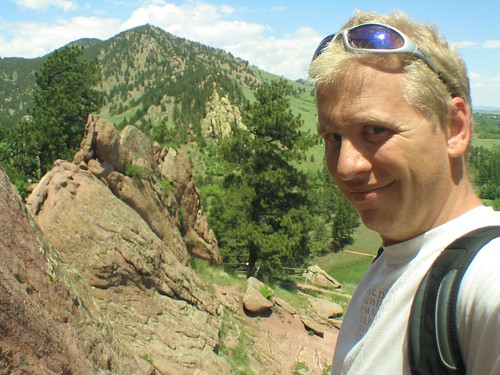

0 Comments:
Post a Comment
<< Home